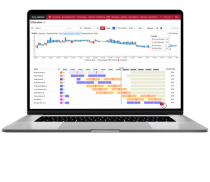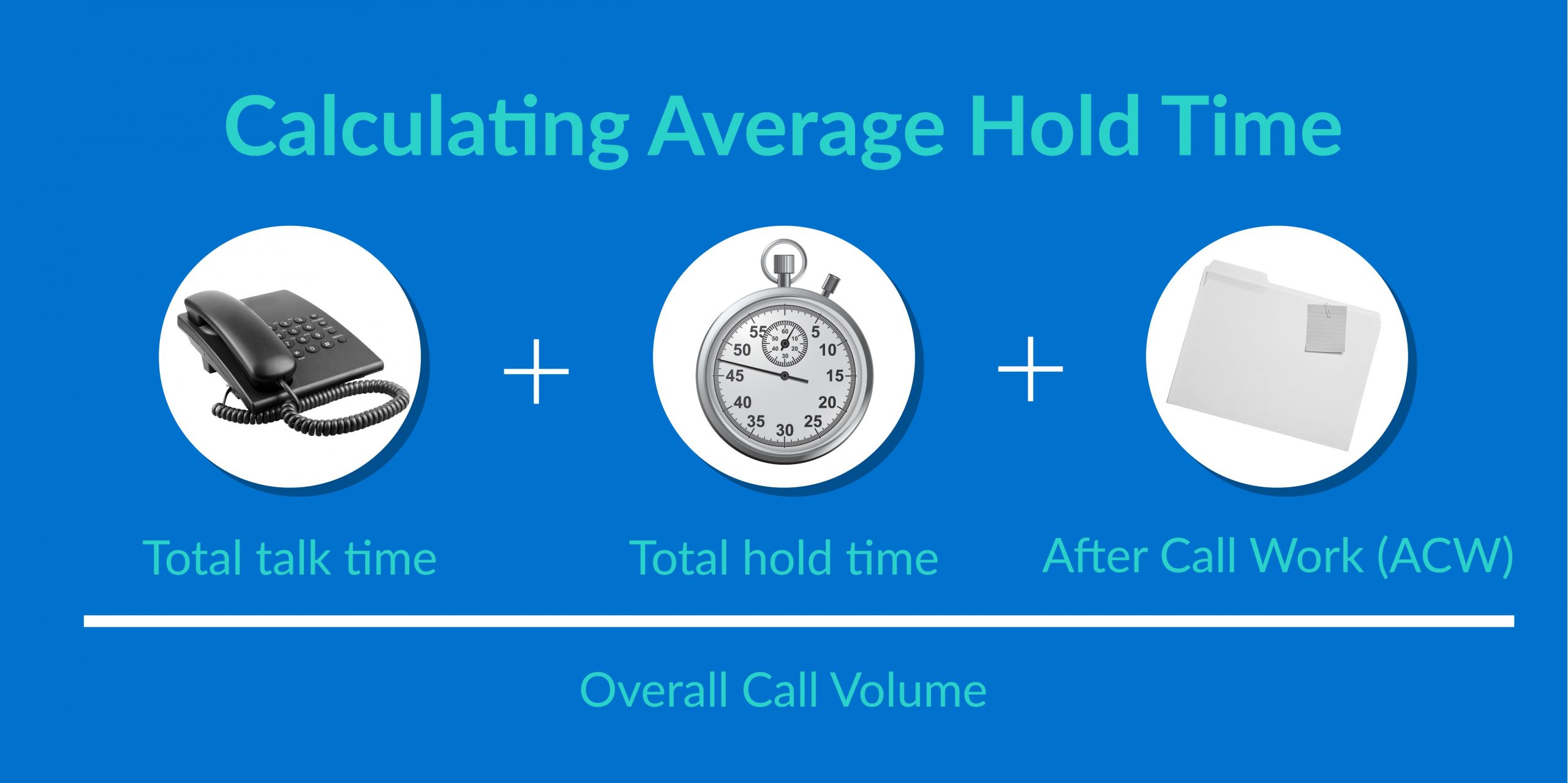- Products
- Solutions
Solutions
Services
- Resources
- Customers
Explore CSC
Calabrio Success Center
Calabrio product training
- Partners
Complete Guide to Contact Center Quality ManagementFind More Great Content- Customer Interaction Analytics
- Workforce Management
- Customer Experience
- Quality Management
- Contact Center Reporting
- Managing a Remote Workforce
Home » Workforce Optimization » What Is Average Handle Time (AHT) in the Contact Center?
What Is Average Handle Time (AHT) in the Contact Center?

What Is Average Handle Time (AHT)?
Average handle time (AHT) is the average duration of a customer call in a contact center. It starts from the moment a customer gets connected with an agent after waiting in a queue until the end of that interaction. This also includes all talk-time, hold time, and after call work, but it doesn’t count the time a customer spends waiting in the queue. For example, if a customer is waiting in line to speak with an agent for 30 minutes, that number isn’t figured into the final AHT.
While the industry standard is 6 minutes and 10 seconds, there are moments where this fluctuates to ensure quality management and all customer experiences. Average handle time is a valuable tool for improving a customer satisfaction score and measuring agent performance, as well as departments and organizations. AHT is used to calculate the length of time the customer is engaged with the agent through all channels such as:
By capturing these metrics, the support team can hopefully cut down repeat calls and repetitive tasks, increase first call resolution, plan ongoing training for call center agents, and improve average talk time. Plus, AHT is one of the major factors in reducing costs related to headcount in a contact center.
How Do You Calculate Average Handle Time in a Contact Center?
Finding the average amount of time spent on phone calls and other channels is relatively simple to do, and it includes only four metrics:
- Total talk time
- Total hold time
- After Call Work (ACW)
- Overall call volume
You will need to add total talk times, total hold times, and the ACWs together. Then, divide that number by the total number of calls to get the average handle time. The best part is that this number can be assessed for individual agents, departments, or throughout an entire organization to boost operational efficiencies.
Depending on the complexity or high-value nature of the calls, the average handle time could be higher. Now, this isn’t an issue for every industry, and it should be assessed on an organizational level. Using call center software to capture these metrics can help leaders determine what actions to take next to get a good average handle time.
How Can You Lower It?
If your agents or contact center is striving for lower average handle times, there are thankfully ways to help reduce and improve those metrics. The first step is to identify the root cause of lengthy conversations by using advanced software to analyze the customer journey from start to finish. Speech analytics can identify numerous factors that could negatively impact AHT score, including:
- Dead air
- Angry customers
- hold-time violations
- Negative or neutral customer sentiment
Part of lowering your average handle time is capturing 100% of customer interactions and analyzing other metrics as well. There are other customer experience metrics, known as key performance indicators (KPIs), that offer deeper insight into customer interactions, including:
First Contact Resolution Rate (FCR)
This critical customer service metric measures the number of customer connections that were resolved within the first interaction. It’s tied to contacts on the organization’s side, and regardless of the number of callbacks or chat backs, each integration gets its own AHT assigned. A good FCR rate ranges from 70 to 75%.
Net Promoter Score (NPS)
A net promoter score (NPS) is used to score how likely your customers are willing to recommend your company’s products or services. For example, a caller may be asked “On a scale of one to ten, how likely are you to recommend [your company here] to a friend?” This number can also improve customer satisfaction scores.
Customer Satisfaction (CSAT)
This metric is closely tied to customer experience since a happy customer likely had a good experience. CSAT is usually a one-word question on a follow-up survey to ask about the satisfaction with that interaction. Companies use this number to track progress and pinpoint trouble areas.
Customer Effort Score (CES)
This score is usually acquired through a survey where a scale of one to ten indicates how much effort customers need to put in to get their problems resolved. If they had a quick and efficient chat, they may rate it a 1 or 2; on the other hand, if multiple phone calls and agents were involved, that number can jump to 8 or 9.
While these important key metrics all indicate customer sentiment and an analysis of them can help to reduce agent AHT, there are additional efforts an organization can take to reduce Average Handle Time:
A Simple UI
Many contact centers have many tools they ask their associates to utilize in a day. A tool to clock in and clock out, one to manage their schedule, a phone system in one place and a knowledge base elsewhere. An online portal for refunds and another one for shipping. The advantage of integrating all these tools in a singular dashboard improves agents’ efficiency during an interaction with a customer.
Knowledge Base
A well-designed, easy-to-search, knowledge base for agents to quickly find information related to a customer’s question. This removes the dead air that often exists while an associate is focusing on finding the right information.
Tools
Investing in the infrastructure of a contact center can play long-term dividends in reducing average handle time. Faster internet speeds and computers, so that no time is wasted on waiting for pages to populate.
Training
Training agents in ensuring the right steps are taken at the right time to make an interaction more efficient. Time-In-Motion studies to identify areas of opportunity and better understanding the paths agents take to help a customer is an important step in reducing the Average Handle time in your contact center.
Why Is Average Handle Time an Important Metric?
Did you know that nearly 51% of customers will stop working with a company if they have only one poor service experience? This means that ensuring quality service needs to be a top priority for call centers. Monitoring average handle time allows leaders to track KPIs for quality management and better understand the efficiencies a contact center can gain. AHT is an efficiency metric that helps leaders implement an agent training program that focuses on improving the overall customer experience.
AHT is important because it shows how well call center agents are equipped to handle questions and concerns. Average handling time is one of the many KPIs that need to be consistently measured and monitored to ensure optimal success between all call center agents and customer interactions.
Increase Customer Satisfaction with Better Average Handle Times
Customers expect fast, reliable, and personal experiences from call centers. To help mitigate low net promoter scores and resolve customer issues, it’s vital to assess the average handle times of every agent and call center. Using machine learning and AI to shed light on customer sentiment can greatly help the whole process since it provides real-time insight for contact centers.
Calculating the AHT of your agents and organization is the springboard for developing a deeper internal knowledge base, planning programs to train agents, reducing average hold time, and improving the overall experience of every caller.
Watch a performance management webinar to help boost staff skills and check out our curated list of quality management resources to learn more.
Dave Hoekstra has spent his entire professional career in customer service, but it wasn’t until he found WFM that he found his true passion. With over 20 years in WFM, Dave has gained insight into the real world challenges of working in today’s customer service. He is one of the few people who truly gets excited when someone wants to talk about Real Time Adherence or Net Staffing reports.Recent PostsCalabrio is a trusted ally to leading brands. The digital foundation of a customer-centric contact center, the Calabrio ONE workforce performance suite helps enrich and understand human interactions, empowering your contact center as a brand guardian.
We maximize agent performance, exceed customer expectations, and boost workforce efficiency using connected data, AI-fueled analytics, automated workforce management and personalized coaching.
Only Calabrio ONE unites workforce optimization (WFO), agent engagement and business intelligence solutions into a true-cloud, fully integrated suite that adapts to your business.
For customers and partners.
© Copyright 2024 Calabrio, Inc.Self-Scheduling: The Answer to Agent Stress in Modern, Omnichannel Contact Centers7 Essential Elements of an Effective Corporate ProgramSend this to a friend - Solutions















